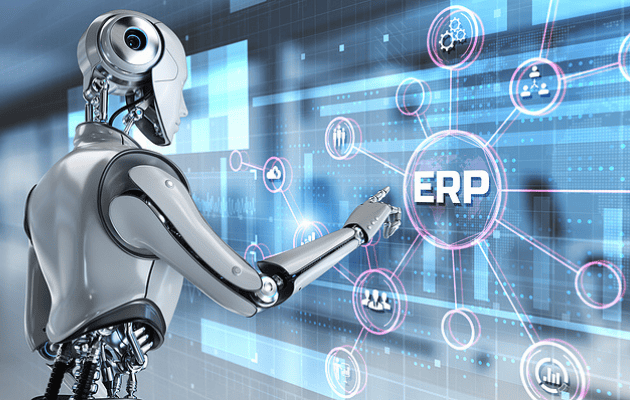Why ERP and AI Need a Thoughtful Partnership
In a recent article for the Business Post, I was asked to comment on the role of AI in ERP systems – a topic that continues to generate both excitement and anxiety in equal measure. The piece, titled ”The Data Dilemma: Why ERP Systems Take a Wisely Cautious Approach to AI”, explored why ERP vendors and customers are taking a more measured path compared to the rapid adoption we’re seeing in areas like CRM.
It’s a timely conversation. AI is everywhere – from boardroom strategy decks to frontline operations, and yes, even in the drafting of blog articles like this one. But when it comes to enterprise systems that underpin financials, supply chain and compliance, the stakes are simply too high for blind enthusiasm.
ERP and AI: A Different Kind of Relationship
While CRM systems have embraced generative AI for tasks like content creation, customer insights and chatbots, ERP systems demand a different level of trust. A hallucinated product description might be embarrassing. A hallucinated balance sheet could be catastrophic.
In AI terms, a “hallucination” refers to the generation of information that sounds plausible but is actually false or fabricated. Many people will have seen this firsthand – for example, when a generative AI tool may confident invent a statistic, misquote a source or fabricate a reference. In the context of ERP, the consequences can be far more serious: invented financial figures, incorrect inventory levels, or non-existent supplier records – all of which could lead to operational disruption or compliance breaches.
ERP is, by design, the system of record for an organisation – often its “single source of truth”. That means any AI embedded within it must be explainable, auditable, and – above all – accurate. This is why we’re seeing ERP vendors focus on relatively narrow, high-value use cases where human verification is built in: invoice matching, document classification and automated reporting.
Large language models (LLMs) are, of course, beginning to find their place in ERP environments – and their role will likely grow. Natural language interfaces are already improving accessibility, allowing users to search, query and generate reports more intuitively. SAP’s Joule, for example, enables conversational interaction with ERP data, while Oracle is embedding generative AI into its Fusion Cloud apps to summarise financials. Progress in this space will likely be steady rather than sudden, with robust guardrails, human oversight and tight integration with structured data remaining essential.
The Real Opportunity: Augmentation, Not Automation
The most promising applications of AI in ERP aren’t about replacing human decision-making – they’re about enhancing it. Think predictive maintenance using IoT data, dynamic pricing based on real-time demand and workforce analytics that help identify skills gaps before they become critical.
These are areas where AI can surface insights that would be difficult or impossible to detect manually, but where the final decision still rests with a human. It’s a model that balances innovation with control – and it’s one that’s gaining traction.

Data Foundations Are the Enabler
Data quality and integration have long been recognised as critical to ERP success – and they’re equally essential in the context of AI. ERP systems contain some of the most structured and validated data in the enterprise, but they’re only part of the picture.
Modern analytics and AI require a unified data architecture that connects ERP with external sources: customer behaviour, market trends, IoT sensors, and more. This is driving investment in data lakes, API-first architectures and master data management – all of which are essential to making AI work in practice.
Change Management Is Still the Hard Part
Even the best AI tools will fail without user adoption. That’s why change management remains a critical success factor. From addressing “AI anxiety” to building data literacy, organisations need to invest in the human side of transformation just as much as the technical side.
Start small. Focus on low-risk, high-value use cases. Be transparent about how AI makes decisions. And above all, position AI as a tool to augment human capability – not replace it.
Final Thoughts
Caution in the face of AI hype isn’t a weakness – it’s a strength. The most successful organisations will be those that embrace AI thoughtfully – starting with strong data foundations, focusing on augmentation over automation, and investing in the people who will ultimately make it work.
This blog was written by Edward Abrahamson, Principal Consultant with Lumenia Consulting. If you're interested in exploring how AI could support your ERP or digital transformation project, contact Edward directly.


